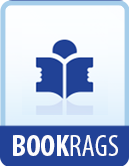In subject-matter the book belongs to the mediaeval age; but Malory himself, with his desire to preserve the literary monuments of the past, belongs to the Renaissance; and he deserves our lasting gratitude for attempting to preserve the legends and poetry of Britain at a time when scholars were chiefly busy with the classics of Greece and Rome. As the Arthurian legends are one of the great recurring motives of English literature, Malory’s work should be better known. His stories may be and should be told to every child as part of his literary inheritance. Then Malory may be read for his style and his English prose and his expression of the mediaeval spirit. And then the stories may be read again, in Tennyson’s “Idylls,” to show how those exquisite old fancies appeal to the minds of our modern poets.
SUMMARY OF THE REVIVAL OF LEARNING PERIOD. This transition period is at first one of decline from the Age of Chaucer, and then of intellectual preparation for the Age of Elizabeth. For a century and a half after Chaucer not a single great English work appeared, and the general standard of literature was very low. There are three chief causes to account for this: (1) the long war with France and the civil Wars of the Roses distracted attention from books and poetry, and destroyed of ruined many noble English families who had been friends and patrons of literature; (2) the Reformation in the latter part of the period filled men’s minds with religious questions; (3) the Revival of Learning set scholars and literary men to an eager study of the classics, rather than to the creation of native literature. Historically the age is noticeable for its intellectual progress, for the introduction of printing, for the discovery of America, for the beginning of the Reformation, and for the growth of political power among the common people.
In our study we have noted: (1) the Revival of Learning, what it was, and the significance of the terms Humanism and Renaissance; (2) three influential literary works,—Erasmus’s Praise of Folly, More’s Utopia, and Tyndale’s translation of the New Testament; (3) Wyatt and Surrey, and the so-called courtly makers or poets; (4) Malory’s Morte d’Arthur, a collection of the Arthurian legends in English prose. The Miracle and Mystery Plays were the most popular form of entertainment in this age; but we have reserved them for special study in connection with the Rise of the Drama, in the following chapter.
SELECTIONS FOR READING. Malory’s Morte d’Arthur, selections, in Athenaeum Press Series, etc. (It is interesting to read Tennyson’s Passing of Arthur in connection with Malory’s account.) Utopia, in Arber’s Reprints, Temple Classics, King’s Classics, etc. Selections from Wyatt, Surrey, etc., in Manly’s English Poetry or Ward’s English Poets; Tottel’s Miscellany, in Arber’s Reprints. Morris and Skeat’s Specimens of Early English, vol. 3, has good selections from this period.




